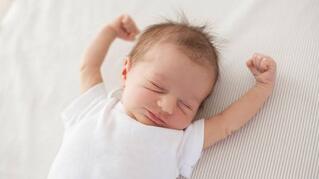MRCO BLOG
Medical Musings, Health Hypotheses & Therapeutic Thoughts
Postpartum Pain NOTE: Due to the subject matter, some of the language and images in this blog post may be a bit... ...earthy. I imagine you are reading this because you or someone close to you is pregnant, in which case you are probably not going to be weirded-out by descriptions of basic biological processes and structures. If you are, I would recommend care with choice of your reading matter! This is an immense topic, which we will have to deal with in several blogs, if my past history of wordiness is any indicator! Pain after giving birth (postpartum, in the medical speak) is influenced by a number of factors. As you would be aware if you read my last blog on the topic (or if you are or have been pregnant yourself!), pregnancy is a time of huge changes for the body. As we have seen, this can create issues in the way that we move and hold ourselves. Now consider that those changes take place very rapidly on a lifetime scale, but pale in comparison to how quickly the body has to change back after the process of delivering the baby, itself an extremely traumatic event for the body, from a technical point of view. The Great Miracle Of Life is a lot more miraculous from a theoretical, removed perspective than it is up close and personal! Well, perhaps it is no less miraculous, but a 'miracle' conjures up an image of something that, well, just happens; and perhaps misses how much bloody* effort, discomfort, and emotion go into the whole affair. *I put in that 'bloody' as an emphatic figure of speech, but it is of course rather literal as well So pain after giving birth may be due to the process of of childbirth, or parturition, and this may especially be the case after a long, 'natural' (a nice euphemism for vaginal, rather than Caesarean section (surgical), delivery) birth, but is certainly not avoided by going the surgical route. This is certainly an issue when a long, difficult natural birth ends up with surgical delivery due to complications - then you can get the issues associated with either! It is extremely important that you discuss any pain after childbirth with your obstetrician, midwife, or other (relevant) healthcare providers. Immediately following delivery, pain, bleeding/discharge, abdominal tenderness and even fever are all entirely possible and completely normal, but should always be checked out in case they are due to complications of birth: Endometritis An inflammatory condition of the lining of the womb, usually due to infection. It is more likely with incomplete delivery of the placenta or other retained products of conception (RPOC) such as membranes or other tissue from the foetus.
The flow should taper off after a few days, and if you get any large flows after this time, report them to your doctor. Ice will be your friend here, whether the cut/graze/swelling is internal or external.
Watching contractions is fascinating from a certain perspective, the whole body seems to ripple and clench in perfect timing and unison, and even muscles that are very far from the actual action will be joining in helping to give that extra bit of 'squeeze'. So again, it is fairly natural to feel sore, ache-y and exhausted - and that's before your new arrival keeps you up for the next three nights or so! These are not the only potential consequences of becoming a new mother. Sore, leaky breasts as your milk comes in (and the pain of blocked ducts if you are unlucky enough to experience those), night sweats as your body expels the retained fluid from pregnancy, headaches (which may be from the hormone levels changing) constipation and hair loss are all likely over the coming days and weeks. Next, we will have a look at the way your body bounces back from pregnancy - or tries to - and the particular issues and problems that can arise from holding, changing and feeding the new addition to your life.
Leave a Reply. |
AuthorsDrs. Edmund Bruce-Gardner and Soraya Burrows are osteopaths Categories
All
|
|
Osteopathy at Moreland Road Clinic
High quality & personalised service from experienced professionals. A safe, effective & collaborative approach to patient care. All osteopaths undertake a 4-5 year university degree and are licensed and registered healthcare pracitioners. |
Find Us
Moreland Road Clinic 85 Moreland Road Coburg VIC 3058 P (03) 9384 0812 F (03) 9086 4194 osteopathy@morelandroadclinic.com.au |
Popular Blog Posts
|
|
|
Osteopathy at Moreland Road Clinic is on Moreland Road, near the corner of Nicholson Street/Holmes Street, on the border of Coburg, Brunswick & Thornbury.
This makes Osteopathy at Moreland Road Clinic the ideal location for people in the inner north and outer northern suburbs of Melbourne, including: Coburg, Coburg North, Coburg East, Brunswick, Brunswick East, Brunswick West, Fawkner, Oak Park, Glenroy, Preston, Pascoe Vale, Pascoe Vale South, Gowanbrae, Hadfield, Essendon, Moonee Ponds, Thornbury and Reservoir. |
28/2/2019
0 Comments